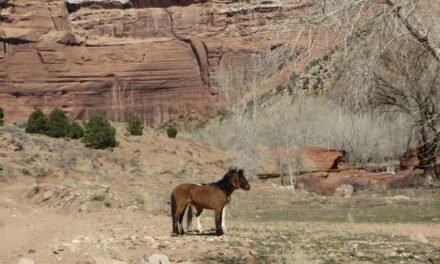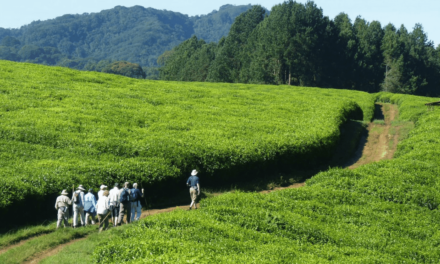
Discover the Azores’ wild and wondrous Terceira Island
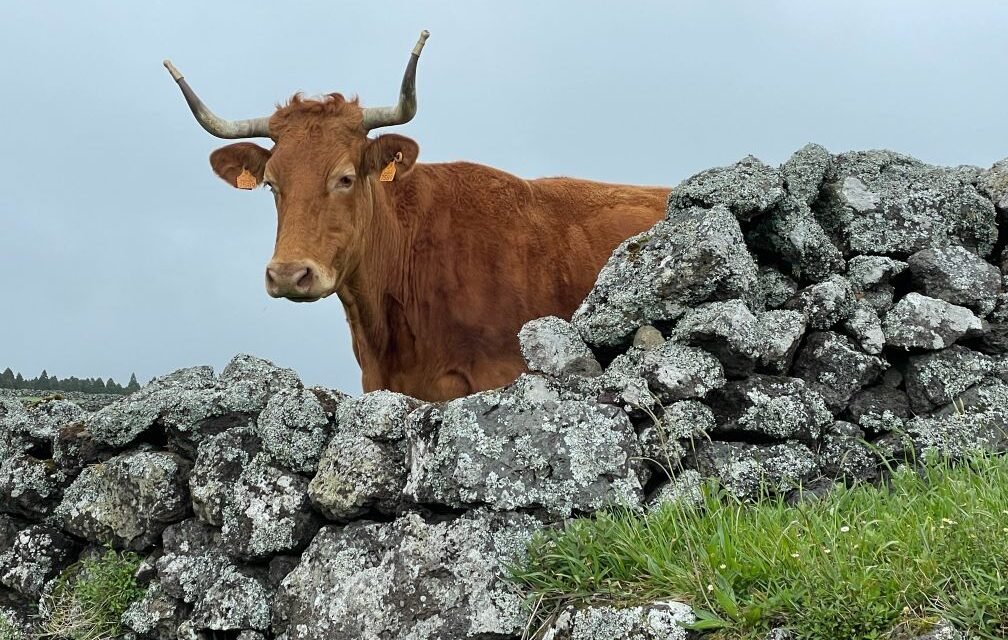
If you’re looking for treasure in the middle of the Atlantic Ocean, head to Portugal’s Azores Islands. You’ll discover breathtaking scenery, geological marvels, inspiring UNESCO Heritage Sites, and a rich culture marked by old world customs and traditions. Oh, and did I mention happy cows?
The Azores were formed when volcanoes under the Atlantic erupted, creating nine major islands: São Miguel, Santa Maria, Graciosa, Terceira, São Jorge, Pico, Faial, Flores and Corvo. The most populated island is São Miguel. It’s also where the region’s international airport is located.
Travelers living on the East Coast of the U.S. can take a five-hour nonstop flight from Boston to São Miguel. Others may opt to spend time on Portugal’s mainland before flying to the Azores.
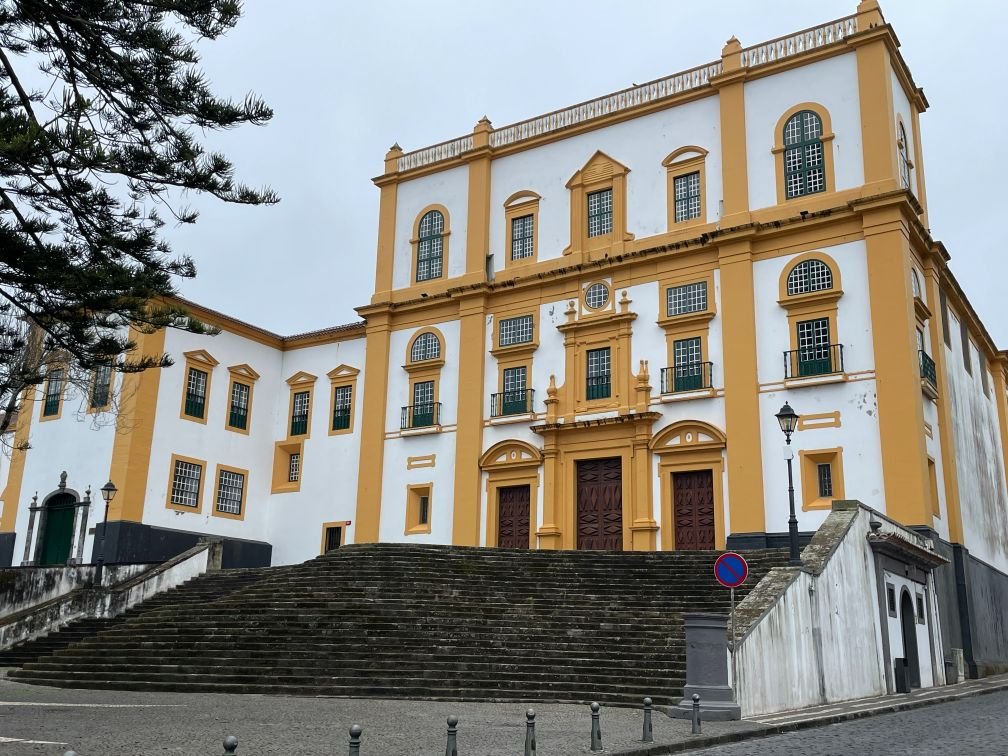
Church of Nossa Senhora do Carmo
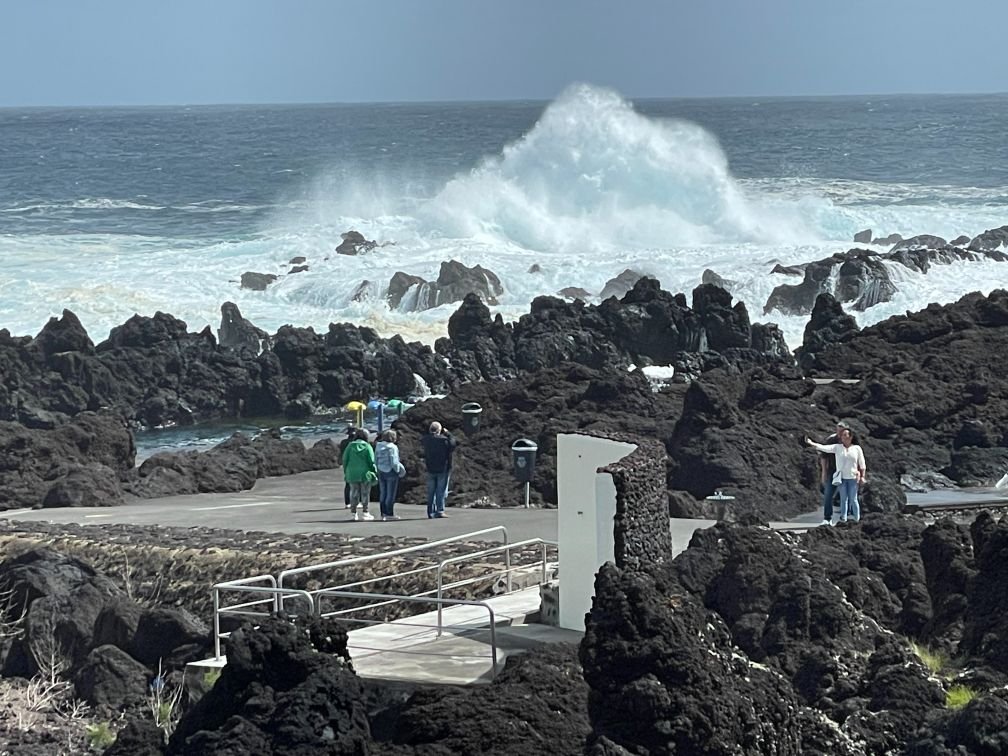
Biscoitos

Algar do Carvao

Azorean traffic jam!
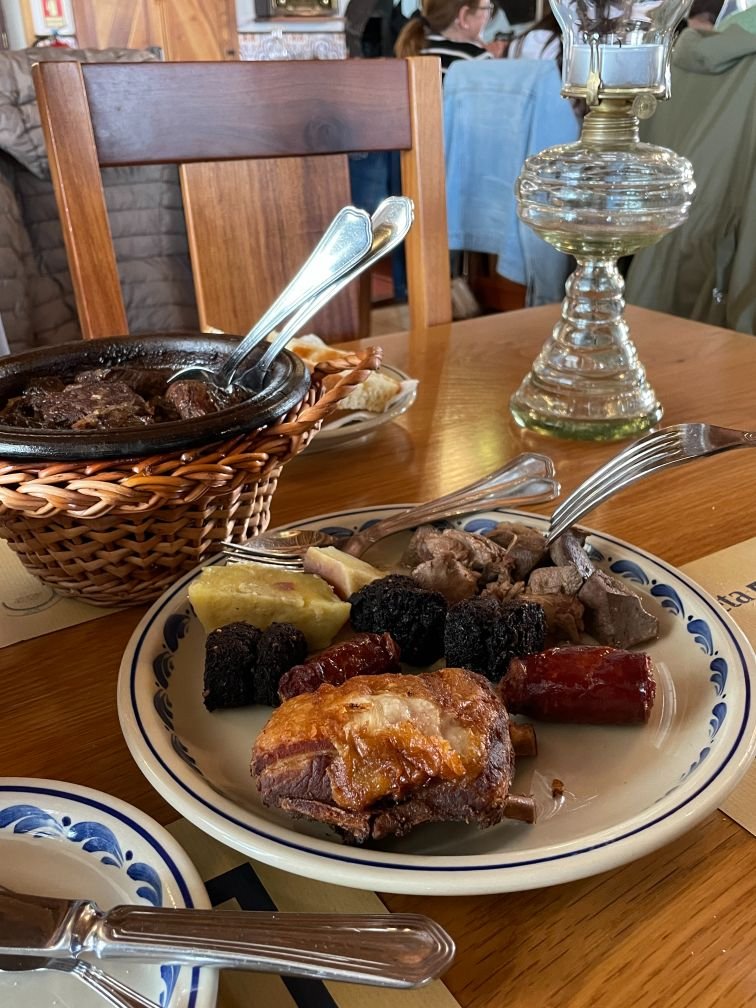
Alcatra at Caneta Restaurant
For my eight-night trip, I chose to work with Archipelago Choice, a company with a stellar reputation in the industry. For over 25 years Archipelago Choice has been pioneering exciting, personalized vacations to the Azores for people who love nature at its best and yearn to explore one of the world’s most charming archipelagos.
I was incredibly impressed with the company’s efficiency and service, both prior to and during my trip. Accommodations were well-curated and the guides were excellent, providing an array of informative tours to the main attractions on the two islands I visited: Terceira and São Miguel.
My Azores adventure began on Terceira, after having spent several days in Lisbon and Sintra. Terceira is the third largest of the Azorean islands, so named because it was the third of the nine islands to be discovered in 1427. But it is the second most populous of the archipelago and has played a significant role in Portuguese and world history, hosting numerous prominent individuals over the years, including presidents, prime ministers, kings and even a Pope.
Most visitors base themselves in Terceira’s main city, Angra do Heroísmo, or simply Angra. This UNESCO World Heritage site was historically the most important city in the Azores, serving as the seat of the Bishop of the Azores and previously as the capital city of Portugal. It was given this name for two reasons: its location and as a result of an act of bravery. The name means cove or bay, describing the location, a strategic place in the middle of the Atlantic. Queen Maria II bestowed “Heroísmo” on the town due to the heroism the citizens demonstrated while defending the island in 1829 against the Spanish.
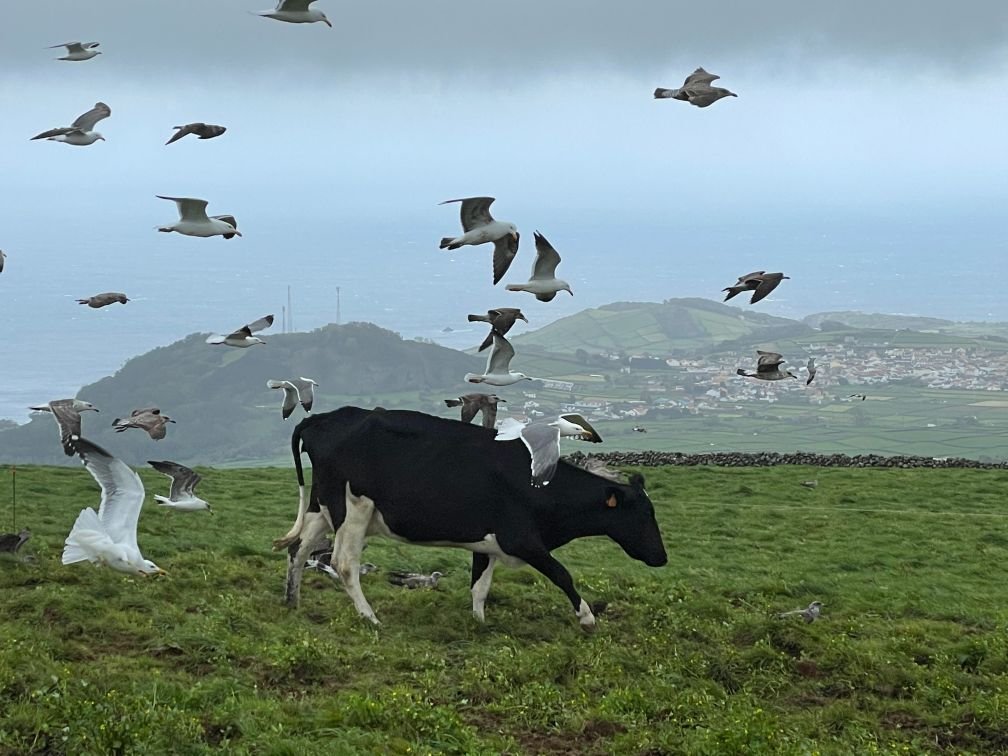
More cows than people on the island
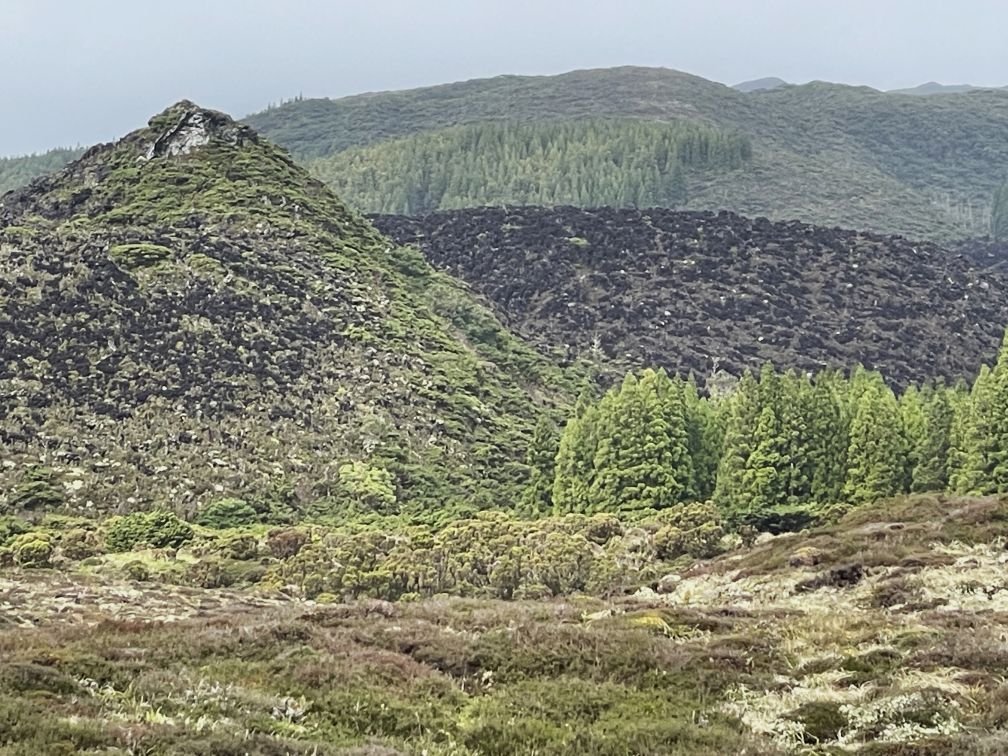
Black Mysteries

Duke of Terceira Garden
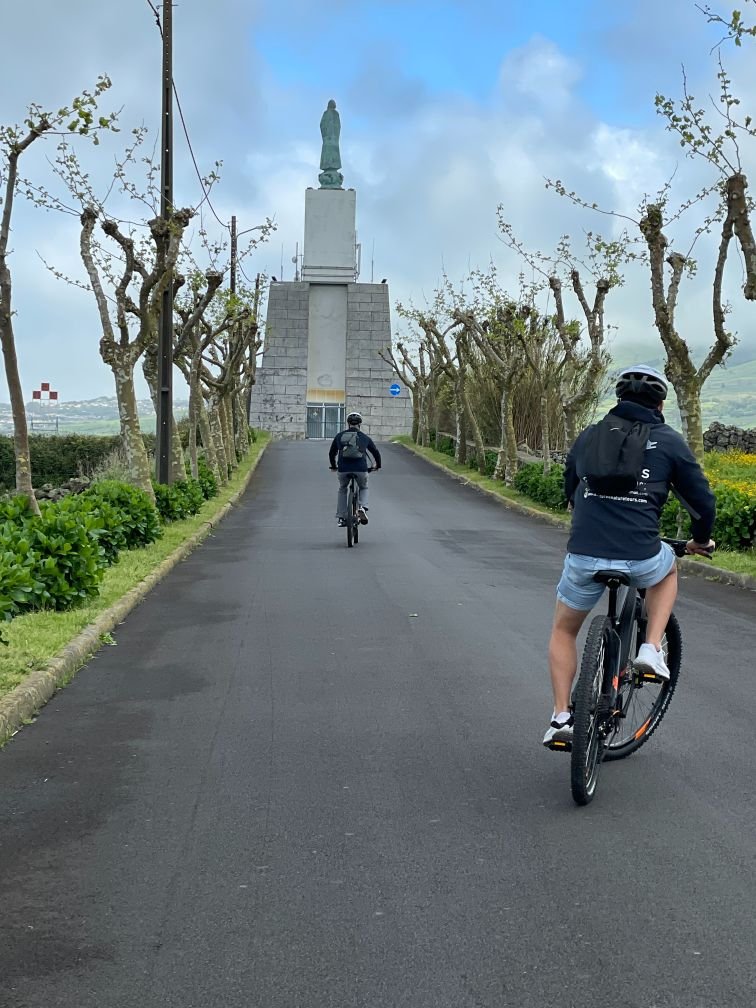
E-bike tour
The historical center of Angra is a picturesque and idyllic enclave of charming colonial streets bedecked with black and white mosaics and colorfully painted buildings sporting wrought iron balconies. The number of impressive churches, monasteries, convents and civic buildings are indicative of Angra’s former importance. Look for a statue of famed Portuguese explorer Vasco da Gama, overlooking the sea. On his way back to Lisbon from his first voyage to India, Vasco’s fleet took a wider course to catch better winds. His brother, Paulo da Gama, however was gravely ill, so the ships headed for the Azores, disembarking on Terceira. Paulo died in Angra and was buried there. Vasco is said to have spent several months on the island, grieving his brother’s death.
Looking around town, you’d never imagine that just 43 years ago, on Jan. 1, 1980, a huge earthquake destroyed a substantial part of the area. True to the Azorean spirit, the people did not let this tragic catastrophe define them, and instead started rebuilding, carefully preserving the majority of the town’s original architectural features.
The sea makes a lovely backdrop for the city and as my husband and I walked along the waterfront, our guide Tiago told us this bay belies many mysteries. It was quite the unfortunate place for ships. In fact, since the mid-1500s, nearly 100 ships are reported to have wrecked in these waters and most have not yet been discovered. It’s basically an underwater archeological park and points to how important the city was for trans-Atlantic maritime traffic.
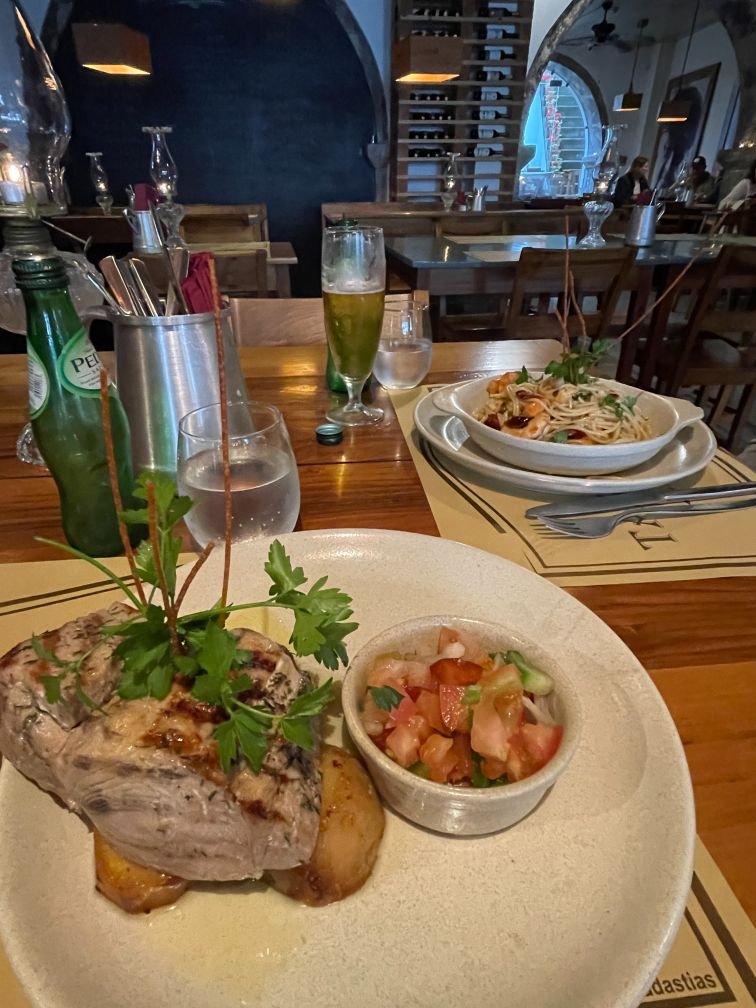
Delicious tuna for dinner

Imperio da Caridade
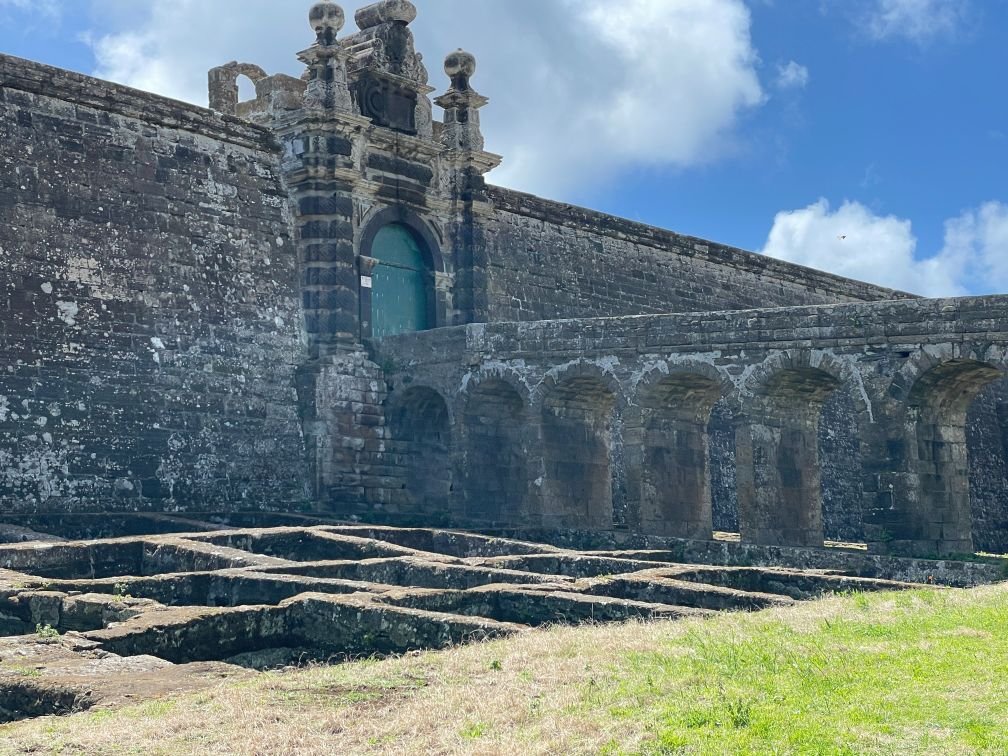
Formidable fort once stood guard at the foot of Mt. Brasil
One of Angra’s treasures is the Duke of Terceira Garden. With its huge variety of flora, representing dozens of species from around the world, this landscaped greenspace in the middle of town is a great place to stroll. When you’re done moseying around the lower sections of the garden, climb up to the Outeiro da Memória, a monument erected in 1846 in honor of King Pedro IV, the fourth king of Portugal and the first king of Brazil. It was constructed from the first stone the King stepped on when he arrived on the island.
The design of this mustard-colored obelisk is shaped like an upside down ice cream cone and has a slightly Asian look to it. Tiago noted that it might be a reflection of the influence coming from ships hailing out of Asia, passing by the Azores on their route to and from the Portugal mainland. The monument stands atop a hill, offering sweeping views of the entire town.
Another icon in Angra is the Castelo de São Joao Baptista, which is situated at the foot of Mount Brasil. The 16th century castle and fortress is the largest of its kind built outside Spain. Mount Brasil is now an extinct volcano, and today, the area is a protected landscape and natural park with numerous hiking trails. It, too, offers great vistas.
Exploring the island with Tiago was a delightful experience. As a volcanic island, Terceira is home to many geographical sights. It boasts one of the world’s few volcanoes that you can descend into, Algar do Carvão. Once inside this splendid formation, you can make out stalactites and stalagmites, deep caverns and lumps of basalt that were dumped when lava flowed through the caves. A large, cavernous area with a domed roof is appropriately named the “Cathedral.” Its shape creates great acoustics and concerts are occasionally held here.
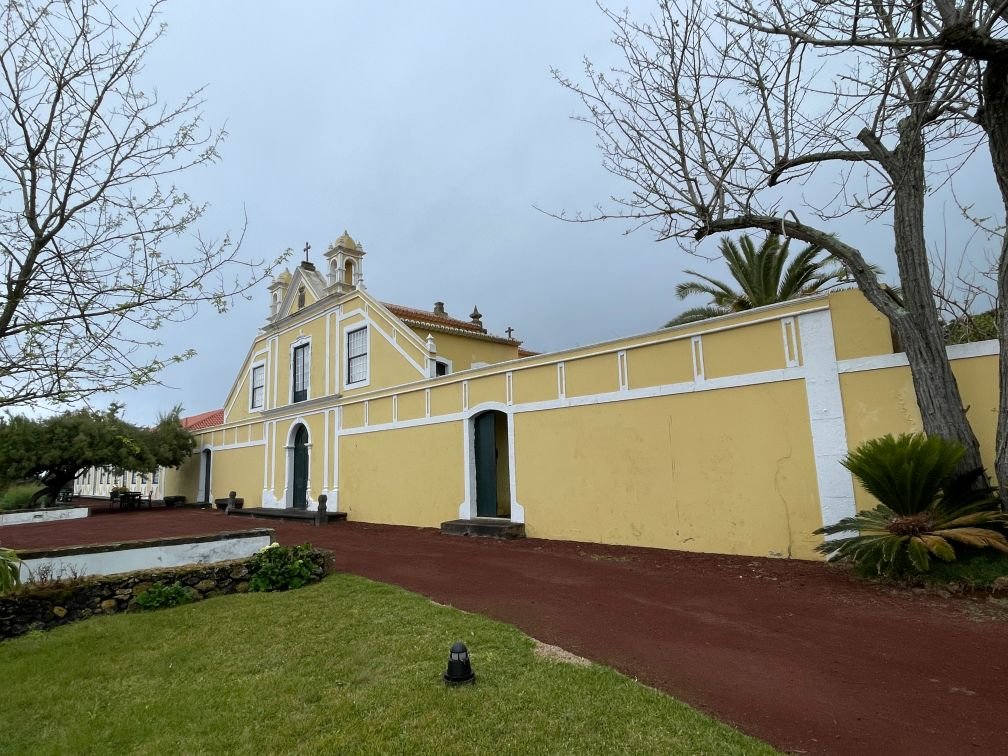
Quinta das Merces, our home away from home

Treat yourself to Portuguese pastry
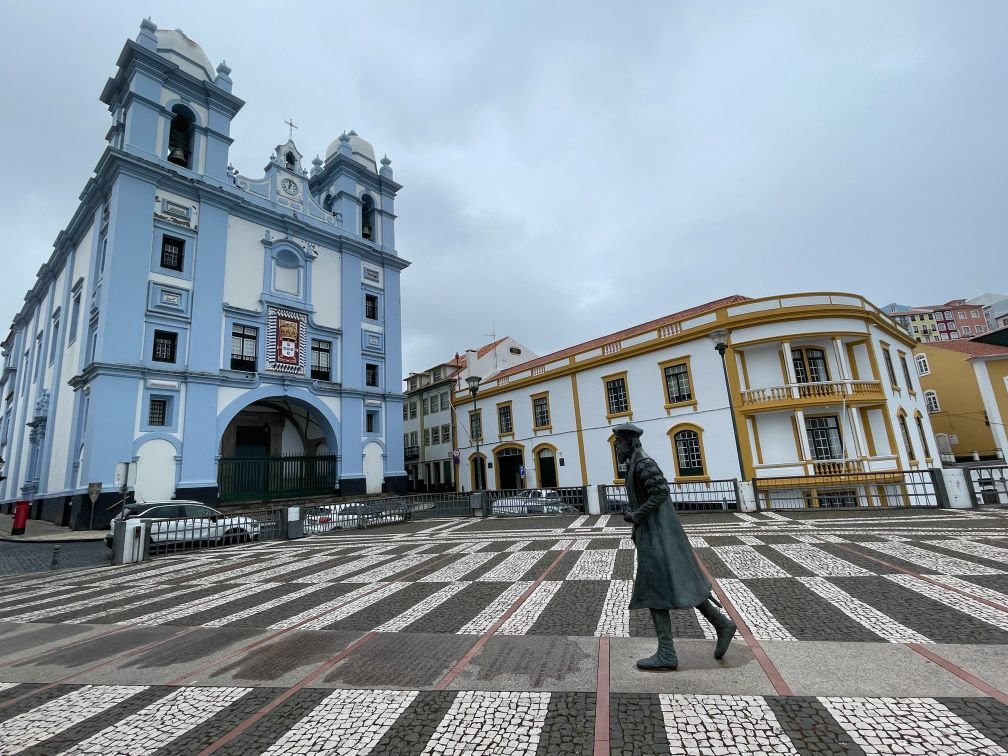
Vasco da Gama makes an appearance

Memorial in honor of King Pedro IV of Portugal
The “Black Mysteries” offer another volcanic-related scene. This is where the lava came out of the volcano. People at that time weren’t able to explain what these streams were, so for lack of a better name, they called them as such. You can take a half-day hike in this area around the volcanic domes and through the forested landscape. And you never have to worry about encountering any snakes, as there are no snakes on the Azores. What a plus!
Cows, though, are ubiquitous on the island. Consider that the population of Terceira is approximately 56,000 and that there are twice as many cows as people. Azoreans have always had a strong connection to cattle, dating back to the 1400s, when the Portuguese discovered the islands and decided to settle them. Initially, they left some livestock to see if they could survive in the rocky terrain. When they returned a few years later, they saw the cows thriving – a good sign this was a habitable place.
It comes as no surprise to learn that milk is the major export of the Azores. Dairy cows are milked twice a day and farmers are strict about the quality of milk and how these animals are fed. Tests are done randomly on all milk because the island has a reputation to uphold. Along with the milk comes cheese, typically in a semi-hard form, possessing a creamy texture and sharp flavor.
Among the cows, you’ll observe the rare and now protected Ramo Grande breed, which came with the first settlers. Locals call them “happy cows,” as they get to simply graze and enjoy the land. The government gives farmers a subsidy to have these animals in order to keep the breed alive for heritage reasons. And not surprisingly, they look quite content with their lives!
We were curious as to why there are no barns on the island and learned that because the climate is mild year round, there’s no need for such structures. Farmers regularly move the cattle to fresh pastures and use specially marked cattle lanes. You definitely know you’re on these routes when you see herds of lumbering creatures blocking the road, creating an Azorean traffic jam!
You’ll also see bulls on Terceira. These creatures are revered here, primarily due to their role in history. In 1581, when Spanish forces tried to conquer the island, they attempted to attack the Bay of Salga. A group of local women thwarted this attempt by releasing the bulls from their farms, letting the animals charge at the Spanish troops. The Spanish were driven back to their boats.

View fromSerra do Cume
Throughout the year, each village on the island hosts a “running with the bulls” event, with a slight twist. The bull has a rope around its neck and it is controlled by the men in the village, as it runs through the streets. It is never killed and is only allowed to engage in this activity one day. When the event concludes, the bull returns to its farm to rest. Those who participate in this activity do so at their own peril, as it is obviously a dangerous sport that can and does have serious consequences.
Such events coincide with the festivities that are held during eight months of the year here. Tiago amusingly noted that the Azores consist of eight islands and one amusement park-Terceira! He said the people fully embrace and enjoy life here.
If you’re interested in taking a dip in the clear waters, know that many of the island’s beaches are typically rocky and known for their crashing waves. But, on the north coast, in the town of Biscoitos, you’ll find coves and natural swimming pools, where the locals have built platforms to make some of the pools accessible for swimmers. The pools are outlined with black rocks from the volcanic eruptions. This is a popular spot and even if you don’t go in the water, the dramatic wave action is worth the trip.
Views are plentiful on Terceira and one notable spot is atop of a ridge in the Serra do Cume mountain range. Standing on the observation platform, you can see for miles across the middle of the island, with the shore of the bay on one side and the green patchwork-like Azorean fields on the other. The fields are divided by a grid of stone walls. This use of stone stems back to when the Portuguese arrived on the island, which was covered in volcanic rocks. They began to clear the rocks and stack them, eventually making thousands of low walls that became property dividers. Though many of the original walls are long gone, some still remain, while new ones continue to be constructed.
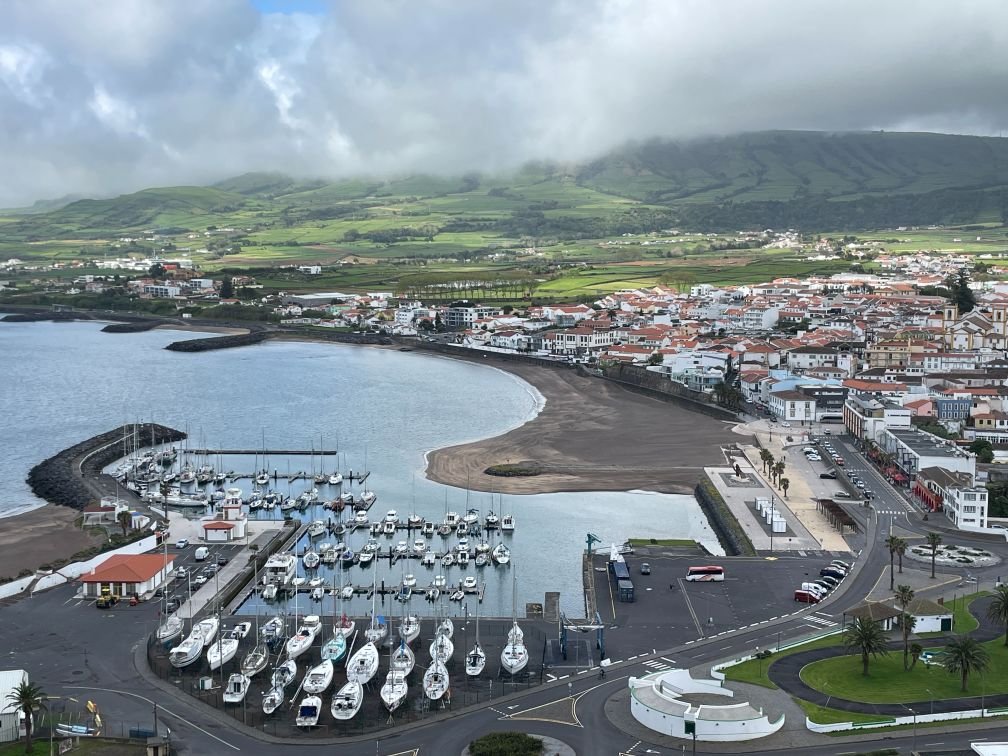
View of Praia
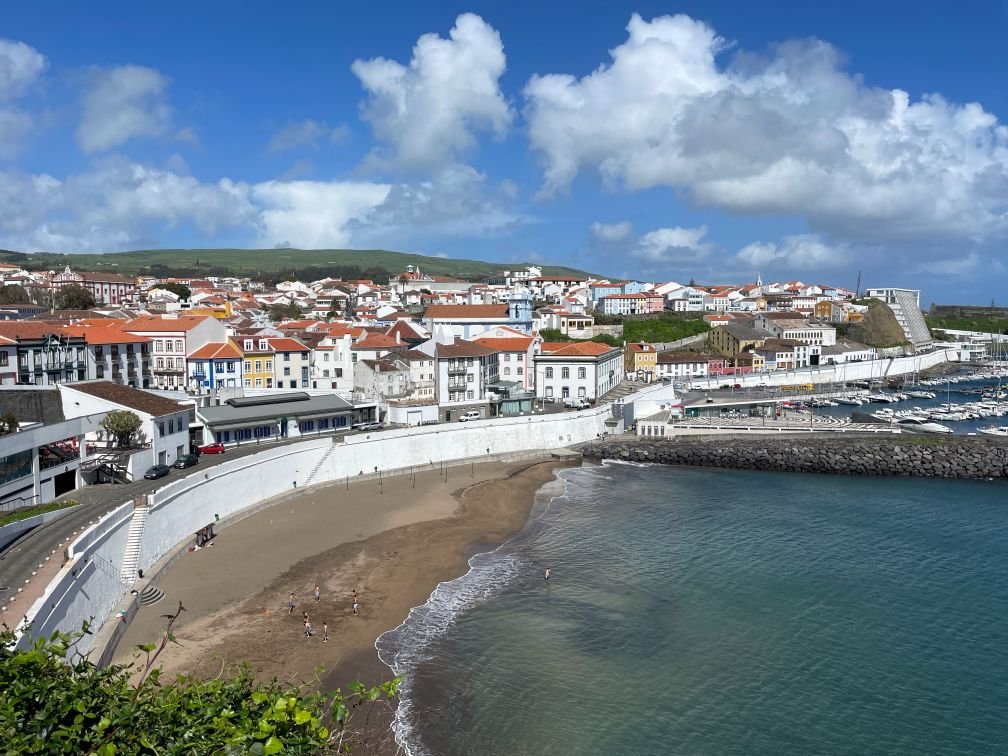
View of Angra
Another day, we headed to the port city of Praia da Vitória, which features a large bay and the only sizable sandy beach on the island. Here’s where we started an e-bike tour, cycling through town and along the coast, taking in various places of interest. Like the Monumento al Inmaculado Corazón de María, a Monument to the Immaculate Heart of Maria, patron saint of the town. The site has a nice viewpoint, Miradouro do Facho, that overlooks the town and bay. There’s also a curious looking telegraph device here, which was used to communicate along the coast during a battle in 1829.
Colorful buildings are in abundance around Praia. The Império da Caridade, for example, is very photogenic. This small chapel is dedicated to the Holy Spirit. For nearly nine centuries, Azoreans have pledged special devotion to the Holy Spirit. There are around seventy such chapels on Terceira alone. Many are decorated with bright hues and topped by an imperial crown on the roof. Inside, there’s a silk covered altar, a silver crown and scepter. Processions of the Holy Spirit take place on Easter and other noteworthy Feast Days, followed by the sharing of meat, wine and bread among the villagers.
As for the island’s culinary specialties, there are several. Alcatra is perhaps the most well-known dish. It’s a type of beef stew, using a rump, which has been seasoned with wine, garlic and other spices and then cooked in a large, unglazed clay pot for six to seven hours until tender. Sausages are also served, and if you’re a fan of blood sausage, you’re in the right place!
Fish and other types of seafood reign supreme. Tuna, caught in the waters around the island, is ubiquitous, as are swordfish, mackerel, shrimp and octopus. And of course, cod – always cod in Portugal! You’ll find these offerings stewed, fried and baked, and accompanied by Azorean sweet potatoes or yams.
On the sweeter side of things is something called Doce de Vinagre, a dessert with the texture of rice pudding, sprinkled with cinnamon on top. Then there are the pastries. Conde da Praia da Vitória, a small cake-like goodie, is a meld of spices and potatoes, and tastes heavenly. As does the famous Queijada da Dona Amélia, the traditional tea cake of Terceira, which earned its name as a tribute to Queen Amélia. She was offered it on her first royal visit to the island in 1901.
As for libations, don’t pass up the chance to try the local beer, wine and liqueurs made with passion fruit and pineapples.
While on Terceira, we stayed at Quinta das Mercês, an historic hotel dating back to the 1600s. Purportedly, the King of Spain once stayed here. Located just outside the city center, across from the water, the property is traditionally decorated and rooms are spacious and comfy, with all the necessary amenities. An ample breakfast is included. There’s also an outdoor pool and gardens, making the hotel a serene respite for travelers.
And now onward to São Miguel!
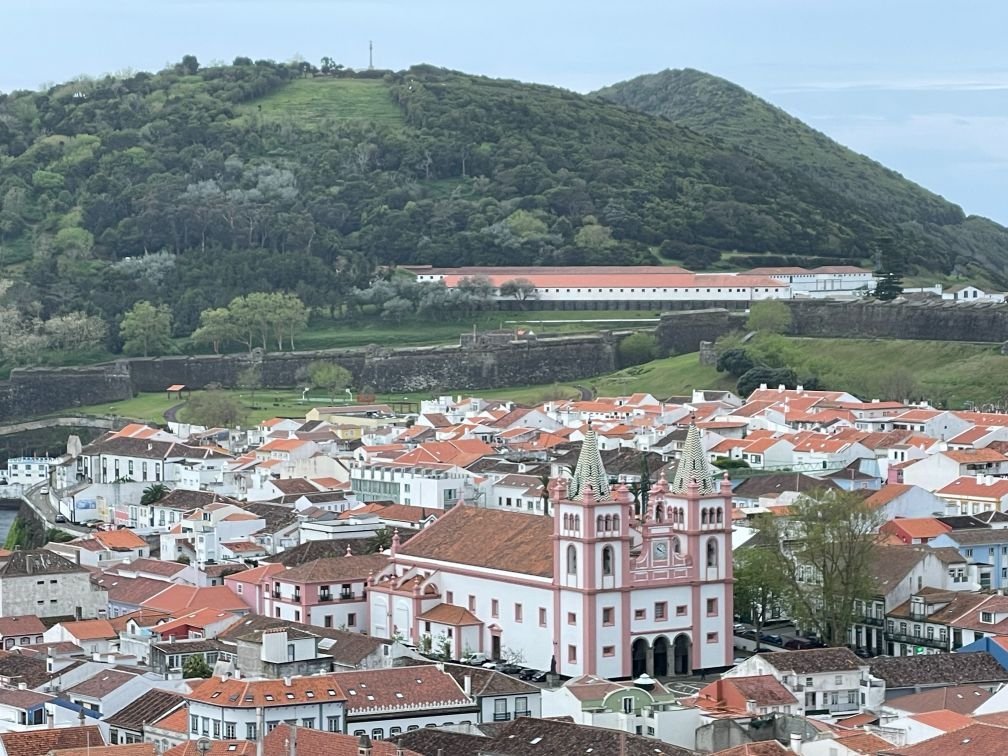
View of Angra and Mount Brasil









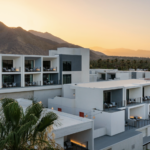

![Jason Baffa: Wine and Filmmaker [INTERVIEW]](https://luxebeatmag.com/wp-content/uploads/2015/06/JUNE-Jason-Baffa-Wine-and-Filmmaker-Sherrie-Wilkolaski-6.jpg)
